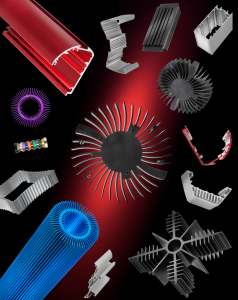Aluminium is the third most abundant element in the Earth’s crust and constitutes over 7% by mass. In nature however it only exists in very stable combinations with other materials and it was not until 1808 that its existence was established. It took many years of research to extricate the metal from its ore and many more to produce a viable commercial production process.
It was in 1808 that Sir Humphrey Davy first established the existence of aluminium and named it. In 1821 P. Berthier of France discovered a hard, reddish and clay like soil containing over 50% aluminium oxide near the village of Les Baux in southern France. He called it bauxite and it is the most common ore of aluminium.
It was in 1825 that Hans Oersted on Denmark produced small quantities of aluminium metal by using dilute potassium amalgam to react with aluminium chloride and distilling the resulting mercury away to leave a deposit of slightly impure aluminium.

Friedrich Wohler from Germany describes the process for producing aluminium as a powder by reacting potassium with anhydrous aluminium chloride. He went on to establish the specific gravity of aluminium in 1845. This is one of its unique properties, namely its lightness, typically a third the weight of steel. This is partly why it’s so widely used in all manufacturing industries today.
Henri Sainte-Claire Deville of France improved upon Wholer’s method in 1854 and this created the first commercially viable process. The price of aluminium drops by approximately 90% during the next ten years form a cost that was higher that gold platinum. This process was again improved upon in 1885 and the annual production of aluminium was now upped to 15 tonnes.
A major breakthrough was made in 1886 when two unknown scientists called Paul Louis Toussaint Heroult (France) and Charles Martin Hall (USA) working completely independently, simultaneously invented a new electrolytic process. This process is the way all aluminium is produced today. They discovered that when they dissolved aluminium oxide (alumina) in a bath of molten cryolite and passed a powerful electric current through it, then the molten aluminium would be deposited at the bottom of the bath.
Aluminium had been produced commercially for only 140 plus years and yet today more aluminium is produced than the other non-ferrous metals combined. Annual primary production of aluminium was about 30 million tonnes in 2016 and in addition a significant amount was produced from recycled aluminium.
